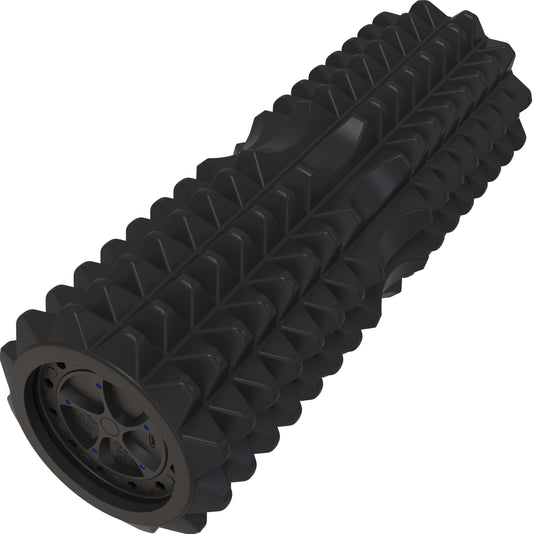Last Updated: April 16, 2025
Lifting weights while fasted has become a popular topic among fitness enthusiasts. Many believe that this approach can enhance fat loss and boost overall performance. Research shows that fasted weight training can lead to better fat oxidation, helping individuals maximize their workouts while in a fasting state.
However, it's essential to understand how lifting weights while fasting affects muscle recovery and strength. Some experts suggest that while it may help with fat loss, it might not be the best option for everyone, especially for those looking to build muscle mass. As the fitness community grows, various opinions and strategies emerge, making it crucial for individuals to find what works best for them.
Understanding the effects of fasted training on body composition and energy levels can guide fitness lovers in making informed choices. With proper knowledge and adaptations, lifting weights fasted may be a valuable part of a workout routine for some.
Key Takeaways
- Fasted weight training can enhance fat oxidation during workouts.
- Muscle recovery might be affected depending on the individual.
- The right approach to nutrition is important when lifting weights fasted.
Understanding Fasted Training
Fasted training refers to exercising without eating beforehand. It can impact how the body uses energy, affecting fat loss and muscle preservation. Key points include defining what a fasted state is, the benefits associated with it, and the potential risks involved.
Defining Fasted State
A fasted state occurs when a person has not consumed food for a specific period, usually overnight or after several hours. During this time, the body's glycogen stores become limited, prompting it to look for alternative energy sources.
In this state, insulin levels drop, promoting lipolysis, which is the process of breaking down fat stores for energy. This shift can lead to increased fat oxidation. For those engaging in weight lifting, understanding this state is crucial for optimizing training outcomes.
Benefits of Fasted Workouts
Fasted workouts can lead to enhanced fat loss as the body utilizes fat as its primary fuel source. When insulin levels are low, it may improve insulin sensitivity, helping in maintaining healthy blood sugar levels.
Additionally, some studies suggest that fasted training can boost growth hormone production. This hormone plays a role in muscle preservation, allowing lifters to maintain muscle mass even while in a caloric deficit.
Fasted workouts may also increase endurance during training. By promoting fat oxidation, the body becomes more efficient in using fat for energy, which can help in maintaining performance over longer training sessions.
Potential Risks and Considerations
While fasted training offers benefits, it comes with potential risks. One concern is the possibility of muscle protein breakdown. Without food, the body may start to use muscle for energy, especially during intense workouts.
There is also a risk of fatigue and muscle fatigue, leading to decreased performance. Lifting weights in a fasted state might result in lower energy levels, which could increase the risk of injury due to improper form or lack of concentration during exercises.
Individuals should consider their fitness goals and overall health before deciding to train in a fasted state.
Influence on Body Composition
Lifting weights while fasted can have notable effects on body composition, impacting both weight management and muscle dynamics. These factors play a critical role in achieving fitness goals, whether one aims for fat loss or muscle gain.
Weight Management and Fat Loss
Fasted weight training may support weight management by enhancing fat burning. Exercising without prior nutrition pushes the body to utilize stored fat as fuel. Studies show that this approach can lead to reductions in body fat percentage, contributing to a healthier body weight.
When combined with a nutritious diet, fasted lifting can be effective for those dealing with obesity. The process encourages the body to adapt to lower insulin levels, which may improve lipid profiles and facilitate greater fat oxidation. Additionally, enrolling in weight training programs alongside caloric restriction often promotes higher rates of weight loss compared to diet alone.
Muscle Gain and Protein Dynamics
Fasted lifting might also influence muscle gain, but it requires careful management of protein intake. Exercising in a fasted state can stimulate muscle protein synthesis, especially when followed by a protein-rich meal. This balance is essential for effective recovery.
While some individuals may worry about muscle loss during fasted workouts, research indicates that the body adapts over time. It can become more efficient in utilizing protein for muscle repair. Consuming adequate protein after training sessions is crucial to maximize muscle gains and support recovery. Prioritizing sources high in protein can significantly enhance results when practicing this training method.
Diet and Nutritional Strategies
Diet and nutrition play a vital role in optimizing weightlifting performance, especially when training in a fasted state. Key aspects include meal timing, nutrient composition, and hydration. The following points explore effective strategies to enhance workouts and recovery.
Intermittent Fasting and Weightlifting
Intermittent fasting (IF) involves cycling between periods of eating and fasting. This eating pattern can support weight loss and fat loss while maintaining muscle. For those who lift weights, he or she can often align their workouts with their eating windows.
During fasting, the body uses stored fat for energy, which may enhance fat oxidation. Studies suggest that fasted workouts may improve metabolic adaptations for some individuals. However, results can vary based on individual metabolism and workout intensity.
Optimal Meal Planning
Meal planning is crucial for maximizing energy levels during workouts. A pre-workout meal that includes a mix of carbohydrates and protein is ideal. Consuming this meal 1-2 hours before weightlifting can provide sustained energy.
Good options for a pre-workout meal include oatmeal with fruit or a smoothie with yogurt and spinach. For those who lift in a fasted state, it’s essential to break the fast with a balanced meal rich in protein and carbs afterward to aid recovery. Hydration should also be a priority to support performance and recovery.
Supplements and Performance Enhancers
While whole foods should be the primary focus, some supplements can enhance performance during fasted workouts. Protein powders can help meet daily protein goals, while branched-chain amino acids (BCAAs) may reduce muscle breakdown if consumed before or during workouts.
Additionally, creatine is a popular choice for strength and endurance improvements. Hydration supplements with electrolytes are beneficial, especially if lifting after an overnight fast. He or she should choose products that align with their specific nutritional needs to support their weightlifting goals.
Workout Considerations and Adaptations
When lifting weights in a fasted state, it is important to prioritize specific strategies to maximize performance and safety. Adjustments in workout structure, intensity, and hydration can lead to better outcomes. This section delves into key considerations that can enhance the fasted training experience.
Structuring Fasted Weight Training
Fasted workouts should be structured to accommodate energy levels. It is best to schedule strength training sessions during times when energy levels are higher, such as in the late morning or early afternoon.
Key points for structuring a fasted workout:
- Warm-Up: Begin with a light warm-up to prepare the body and avoid injury.
- Exercise Selection: Focus on compound movements, such as squats and deadlifts, which engage multiple muscle groups for efficient workouts.
- Duration: Keep workouts between 45 and 60 minutes to minimize fatigue.
Short, effective training sessions can maintain strength gains while adapting to a fasted state.
Modifying Intensity and Volume
Training intensity and volume may need adjustments in a fasted state. While high intensity can enhance fat oxidation, it can also lead to quicker fatigue without prior fuel.
Recommendations for modifying workouts:
- Intensity Levels: It may be wise to use moderate intensity for most exercises. This approach can sustain energy and maintain form.
- Volume Control: Reduce the total volume, especially for heavy lifts. Consider using fewer sets or repetitions to avoid exhaustion.
Listen to the body and be flexible with the workout plan to ensure effectiveness without overexertion.
Hydration and Electrolyte Balance
Hydration is critical during fasted workouts, as fluids help maintain performance and recovery. In a fasted state, the risk of dehydration may increase, so one should aim to stay well-hydrated.
Hydration strategies include:
- Pre-Workout: Drink water before starting the workout, focusing on sipping fluids throughout the session.
- Electrolytes: Including electrolytes can replace any lost minerals during intense training. Using electrolyte drinks or supplements can help maintain balance.
Adequate hydration and electrolyte levels can lead to better performance and support metabolic adaptations during training.
Physiological Effects of Fasted Exercise
Fasted exercise leads to several physiological changes that can affect performance and body composition. Key aspects include hormonal responses, how the body metabolizes fats and carbohydrates, and adaptations in muscle tissues. Understanding these factors is important for anyone considering weight training in a fasted state.
Hormonal Responses to Fasting and Training
When engaging in fasted exercise, the body experiences significant hormonal changes. Cortisol, a stress hormone, often rises, which can enhance fat breakdown to provide energy. In contrast, insulin levels drop since there is no food intake. This reduction in insulin promotes fat metabolism, allowing fatty acids to be utilized more efficiently during exercise.
During this time, glucagon levels increase, stimulating the release of stored energy. This process supports the body in maintaining energy levels while training. These hormonal shifts can enhance the body's ability to mobilize stored fat and increase energy availability without relying on carbohydrates.
Metabolizing Fats and Carbohydrates
Fasted exercise shifts the body's energy source from carbohydrates to fats. When glycogen stores are low, the body turns to fat stores, promoting fatty acid oxidation. This has several advantages, including improved insulin sensitivity and enhanced fat loss.
Aerobic exercise while fasted further encourages the body to metabolize fats. The process of glycolysis is reduced, as there are fewer carbohydrates available. Instead, the body relies on gluconeogenesis to produce glucose from non-carbohydrate sources. This process helps maintain blood sugar levels, allowing for sustained energy during workouts.
Adaptation of Muscle Tissues
Training in a fasted state can promote adaptations in muscle tissues. The combination of fasting and exercise stimulates muscle protein synthesis and can lead to improved muscle endurance. This response occurs as the body seeks to adapt to a less available energy supply.
As muscles adapt, they become more efficient at using fatty acids for fuel. This adaptation may also enhance the muscles’ ability to store glycogen during periods of refeeding. Such changes can ultimately contribute to better overall performance during workouts while supporting body composition goals.
Community and Coaching for Fasted Training
Fasted training can be enhanced with the right support system. A strong community and expert coaching can make a significant difference in achieving fitness goals. Whether it’s through finding a training partner or joining a fitness squad, having support helps with motivation and accountability.
Finding a Fitness Squad and Training Partner
Joining a fitness squad can provide the camaraderie necessary for successful fasted workouts. Individuals can connect with others who share similar goals, such as building strength while training without food. Finding a swolemate or training partner can boost motivation.
Training together can lead to friendly competition and encouragement. Members can share tips, experiences, and celebrate achievements. Additionally, having a partner can keep individuals accountable for sticking to their fasting and training schedules. Community support can be key to maintaining consistency in workouts.
Expert Guidance and Workout Programs
Enlisting the help of master coaches can elevate fasted training. Coaches provide personalized programming based on individual needs and goals. They offer tailored advice on how to balance nutrition with workouts.
Structured, guided workouts can help maximize the benefits of training in a fasted state. Many programs are designed to fit various fitness levels and preferences. This means whether one is a beginner or an experienced lifter, they can receive expert guidance. Some programs may also offer health kit access for tracking progress effectively.
Rewards and Motivation
Motivation can be enhanced through earning rewards and achieving goals. Many fitness platforms offer goal tracking features, allowing users to monitor their progress. As individuals reach milestones, they can collect rewards, further encouraging commitment to their fasted training routine.
Earning specialty badges for unique achievements creates a fun challenge. This recognition enhances the experience and reinforces the importance of sticking to workout plans. Participating in community challenges can add an extra layer of motivation to one’s journey. Engaging in a supportive environment can significantly boost one’s ability to stick with weight training while fasting.
Additional Resources
Fasted workouts can raise many questions for those interested in weight training. The following resources provide valuable insights into effective strategies, products, and research to support fitness goals.
Recommended Reading and Research
For anyone looking to deepen their understanding of lifting weights while fasted, several resources are beneficial. Articles from fitness websites offer studies and firsthand accounts about the effects of fasted training on strength and recovery.
- Verywell Fit covers the pros and cons of fasted workouts, providing a balanced view of benefits like fat burning against potential drawbacks.
- ACE Fitness explains why strength training while fasted might not be the best for muscle growth, helping readers set realistic expectations.
Checking various studies can further equip individuals with the information needed to make informed choices about their workouts.
Product and Supplement Partners
To maximize the benefits of fasted training, certain products and supplements can be helpful. Partnering with reputable brands ensures quality and effectiveness in fitness journeys.
- Signature products from trusted brands often offer formulations that support energy and recovery.
- Customers can often find promotions like 10% off on their first purchase or free shipping on orders, which can be a great incentive.
Many brands provide access to 1000+ workouts tailored to different fitness levels, ensuring users can find the right fit for their training styles. These resources combine quality information with product support to aid anyone considering lifting weights in a fasted state.
Frequently Asked Questions
Many people wonder about the effects of lifting weights in a fasted state. This section addresses common questions regarding potential benefits, impacts on muscle growth, and the relationship between fasting and weight training.
What are the benefits of weight training in a fasted state?
Lifting weights while fasted might improve fat oxidation. This means the body may rely more on fat for energy during workouts. Some individuals also report enhanced mental clarity while training without food in their system.
How might fasted weight training impact muscle growth?
Research suggests that fasted training might not significantly hinder muscle growth for most people. Strength training helps to preserve muscles even in a fasted state. However, adequate nutrition after workouts is crucial for recovery and growth.
Can fasted weight training be effective for fat loss?
Fasted weight training may promote fat loss by encouraging the body to use stored fat as energy. This approach can support a caloric deficit, which is essential for weight loss. Consistent training and a balanced diet remain important to achieve desired results.
Are there any specific advantages of lifting weights fasted for women?
Women may experience benefits from fasted weight training, such as improved hormonal balance. Some studies indicate that it can help in managing weight and promoting fat loss effectively. Individual responses can vary, so results may differ.
What are the potential risks or downsides of fasted weight training?
Fasted weight training can lead to fatigue or decreased performance for some individuals. It may also increase the risk of muscle loss if not managed properly. Those with specific health conditions should consult a doctor before starting this regimen.
How does intermittent fasting relate to weight training performance and results?
Intermittent fasting can influence weight training outcomes. It often involves scheduled eating periods that align with workouts. This may lead to improved muscle recovery and fat loss, depending on individual dietary choices and training intensity.












